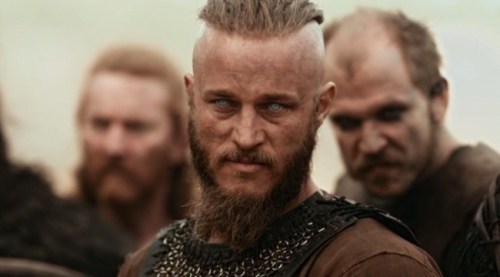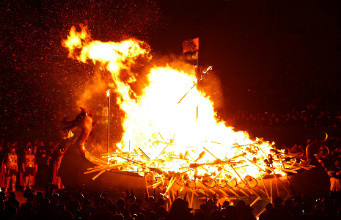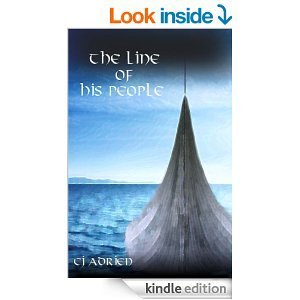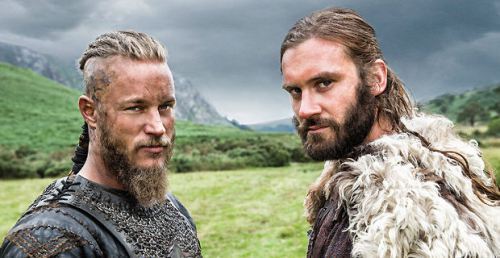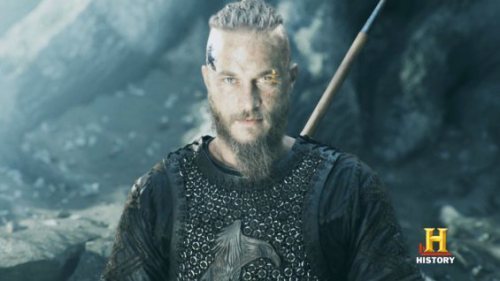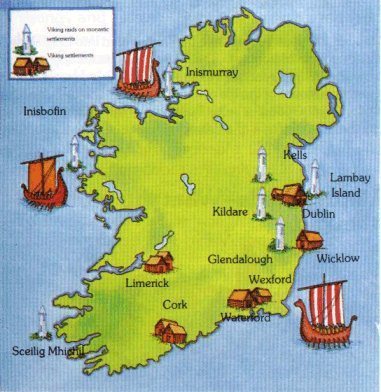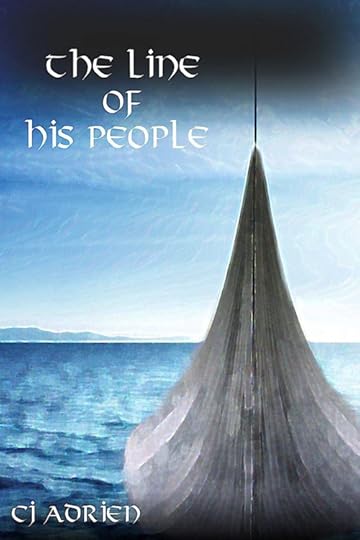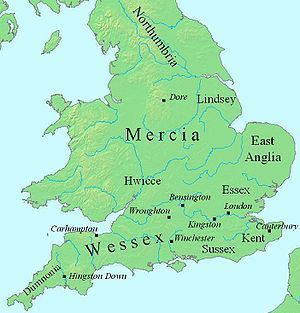C.J. Adrien's Blog, page 28
March 27, 2014
History Channel Vikings Episode 205 Prediction
While there are many things to look forward to in Vikings episode five of the second season, I most look forward to the story of Athelstan in Wessex, as well as the fate of Horik and his encampment. Athelstan will face many trials, especially considering he will be found out as a traitor to his faith. Historically, Christians were ruthless. Charlemagne, emperor of the Franks, felt a strong conviction to spread Christianity across Europe. He did so through military conquest. If enemy prisoners were taken by Charlemagne’s troops, they were forcibly baptized in the nearest river, then held underwater until they drowned. If this is any indication of the nature of the Christian church in the time period used as the setting for Vikings, then Athelstan’s suffering has barely begun. I am curious to see what the History Channel makes of this lesser known and lesser understood cultural trait of early Christianity. My prediction for Athelstan is that Ecbert will find use in him for his linguistic skills. Athelstan will be spared for his ability to translate, despite the bishop’s advice to Ecbert to have him executed.
Ragnar’s reunion with his previous wife and eldest son is following a predictable pattern of storytelling. This does not mean that it will lack excitement, but it certainly makes for easy predicting. Jarl Borg will likely receive news of Ragnar’s reinforcements and take immediate action. Rollo will slowly regain his brother’s trust. Siggy will be torn between Lagertha and Aslaug for her loyalty. Ragnar will be too focused on his revenge to deal with his lady problems, and he has his son to get to know in the mean time. Of course, these are all predictions, but I do envision a much greater role for Siggy, especially considering her involvement with Rollo who will, in my opinion, continue to rise again as a prominent character.
Rollo will be popular to audiences because he is fallible. He makes mistakes, like all of us. He is often vulnerable, like all of us. Yet, when faced with hardship, he rises to the occasion and does whatever it takes to get through, as well as earn his place back among the others, which is something we all can appreciate and admire. Thus, my final prediction is that Rollo will be the most noticeable Viking in the next episode.
We must not forget Bjorn, but his character is not yet well developed. Bjorn’s rise to stardom will have to wait a few episodes. However, we can look forward to more of Bjorn and to learn more about him in the next episode.
I will see you all TONIGHT night at 10/9 Central. only on History Channel!
Like the Vikings? Try this epic novel about the Vikings in France named The Line of His People.


March 25, 2014
Did the Vikings Really Burn Ships During a Funeral?
While a burning ship certainly has a flare for the dramatic, the actual practice of ship burning may have never existed. Most of what we know about the funeral practices of the Vikings comes from archeological digs: thus a burning ship in open water is a rather improbable piece of evidence to be found. Concerning the true and well understood funeral practices of the Norse, we do know that they often buried ships. Archeologists have removed from the ground several fine specimens including the Gokstad and Osberg ships (the most famous of them all). Where then did the idea of ship burning originate?
First we must look at the evidence we have to examine. None of the Christian Chroniclers have ever mentioned burning ships, nor did they spend any measurable time examining the funeral practices of their heathen counterparts. Luckily, Christian Chroniclers are not the only written sources on Norse culture. Ibn Fadlan, an arabic chronicler of the 9th century, travelled north through modern Turkey and into the lands known as the Land of the Hazaars (distant relatives of the huns). There he encountered a different culture he had not anticipated to find. Through trade and the facile accessibility provided by the designs of their ships, Swedish Vikings known as the Rus had navigated across Eastern Europe as far as the Black Sea. Ibn Fadlan spent a reasonable amount of time living among the Rus and wrote meticulous notes on their cultural practices. In these notes, Ibn Fadlan wrote of the burning of ships during the funeral of a king. It is from his accounts that historians decided that this must have been a common practice among all Vikings. Unfortunately, there are too many questions left unanswered such as: why is this the only account? Why are all the other burials in Scandinavia of buried ships? Could the Rus have improvised the burning ship for lack of access to their normal practices? Burning a ship leaves no evidence behind, and thus it cannot be disproven just as it cannot be definitively proven. Perhaps evidence will come to light in the near future; perhaps it will be found by you.
Study History.
Like the Vikings? Try this book.


March 21, 2014
“The Line of His People” kindle GIVEAWAY
The time has come again for another GIVEAWAY through kindle.
From Saturday, March 22 through Sunday, March 23, The Line of His People by C.J. Adrien will be FREE. Get your copy then!
U.S.:
Amazon.com: The Line of His People eBook: C.J. Adrien, James Blau: Kindle Store
History Channel’s Vikings Episode Four Rich With History
Episode four of History Channel’s Vikings promised to deliver story-wise, but it also delivered history-wise. While every viewer can enjoy the emersion into 9th century Europe, the trained eye has many details to appreciate, and it takes multiple viewings to catch them all. Due to the wealth of historically accurate details, the show keeps seasoned scholars hooked — watching closely for specific elements they have only read about brought to life. For those viewers who wish to explore the historical Vikings after the show, the following list of details worth exploring should help kick start your research and understanding of the show’s elements in which the producers of Vikings put a tremendous amount of research and effort to recreate.
First, the apparent dismay of Aslaug to stay in a “filthy” farmstead may appear out of place, but the Scandinavians of the 9th century were in reality cleaner than their European neighbors. Almost all sources indicate that the Vikings were among the cleanliest of all Europeans during the Early Middle Ages. In the summer, bathing could be preformed in lakes or streams, or within the bath-houses found on every large farm (these would be much like the Finnish sauna, though tub bathing was also used), while in winter the heated bath-house would be the primary location for bathing. In Iceland where natural hot springs are common, the heated water was incorporated into the bath-house. It wasn’t until the spread of Christianity that the Scandinavians abandoned their extensive grooming practices. Christians thought regular bathing to be odd, and that self-grooming was a sign of vanity. Thus, Aslaug had every reason to feel uneasy about a lack of cleanliness.
The mystical shaman who prophesied Jarl Borg’s eagle is, however, out of place (but do not worry, he is actually a strikingly good detail). Men were recruited either as slaves or free warriors. Foresight and magic were seen as the domain of women. Women, it was believed, had an innate capacity to do magic. While ceremonies regarding religious observance in pagan Scandinavia were the duty of the Jarl, king, or head man, other observances fell upon the rare but important Angel of Death. These were women devoted to the dark arts of magic and who communed directly with the gods. Even more rarely, men took up the dark arts; these men, however, had to be out of place in society. Vikings had little tolerance for birth defects and disposed of the children with any physical deformities. Every so often, one of these children might have been spared, and the deformities seen as a sign or act from the gods. Therefore, the shaman in Vikings is a wonderful addition to the historical perspective insofar as his physical deformities would have set him apart and sent him on a path where he would have taken up the dark arts as a man and earned a respected place in the community.
Ecbert in the show, or more commonly known in history as Egbert, displays character traits close to his true historical counterpart. Egbert had ambitions to conquer the whole of England. In fact, during his conquests he managed to earn the title of High King of Britain for a short time until his rivals the Mercians successfully undermined his authority. He was an ambitious man, and a skilled tactician. What is impressive is that he was real, and the series is doing a wonderful job of bringing him to life. Not only is the character rich with personality and interesting, but the palace he lives in is true to history. Egbert lives in an old roman villa — slightly rebuilt but generally worn by time. The archways are low, the windows are small (Roman walls could not support large windows), and the vestiges of a lost time remain. While most viewers may not consider the bath to be an important detail it, in fact, is. Today tourists in England can visit the still standing Roman baths in the town of Bath (the ‘a’ is pronounced as an ‘aw’). It is no surprise that these baths would have been used by the Saxons. In fact, there is evidence that the Moors continued to use the Roman bathhouses left in Spain; therefore it is accurate and important to see Egbert making full use of those facilities.
Rollo, Ragnar’s brother, alluded to the political organization of the Scandinavian countryside upon his return to the farmstead where Ragnar’s family had fled. He mentioned nearby farms with available warriors who agreed to fight with him. This detail truly impressed me. Scandinavia in the early 9th century had just emerged from the Scandinavian Iron Age. Society was scattered into pockets where farming and hunting were most abundant. In these pockets the people built farms, but free men were still expected to fight. In the time period of the show Vikings’s setting, most people would have lived on isolated farms controlled by a ‘head man’, jarl, or even a king. Farms would ally, forming loose confederations. In the early 9th century, these confederations became known as petty kingdoms, all of whom were locked in intermittent warfare. This lack of cohesiveness is what caused the Vikings to raid early on rather than conquer other areas in the first half of the 9th century. It was not until more astute warlords in the 840’s and 850’s emerged to unify the smaller kingdoms under one ruler that larger armies and invasion forces began to grab land all over Europe. Rollo’s visit to individual farms in the show is evidence that the show’s creators were mindful of this early political organization.
Lastly, the detail that continues to impress is Ragnar’s innate curiosity. He explored Ecbert’s palace, asked questions, and even admitted to the king of Wessex that he is a curious man. This is consistent with the idea that the Scandinavians valued learning as reflected in their mythology by Odin. Ragnar expressed interest in the farming practices of the area and wished to visit and explore. Archeological finds have shown that during the Viking Age, Scandinavian farms experienced a sudden, rapid increase in technology.
If you have not seen the show, look for it on History Channel’s website. It is worth every minute. If you are an avid viewer, hopefully the above information will give you greater insight into the historical side of the show, and thus a deeper appreciation for the work the creators of Vikings have done. As a fan of the historical Vikings, and a fan of the show, I look forward to next week’s episode with the impatience of Thor.
If you enjoy the Vikings, check out C.J. Adrien’s novel here.


March 19, 2014
Where Does the Word “Viking” Come From?
The word “Viking” was introduced into Modern English during the 18th century at which point it acquired a romanticized significance. Most notable in the exaggeration of the Viking myth was Richard Wagner’s “Flight of the Valkyries”, a 19th century play devoted to the ideal of the honorable barbarian. It is this same mise-en-scène that saw the creation of the Viking horns: they were a wardrobe prop, nothing more (and certainly not historically accurate). Etymologists frequently trace the word “Viking” to medieval writers referring to “one who set about to raid and pillage”. The word ” Viking” in the sense in which it is commonly used is derived from the Old Norse, “víkingr”, signifying a sea-rover or pirate. But we must not forget that Scandinavians were not all savage pillagers and rapists. They had a thriving society in the north, which was created out of scarcity. We tend to remember the bad apples of history, but in reality the Scandinavians of the latter portion of the first millenia were no more savage or violent than their germanic cousins in the south and west (Saxons, Angles, Franks, Burgundians, etc…).


March 18, 2014
Émission “Vikings” de History Channel Fait Succès Chez les Audiences Américaines; et c’est bon pour l’Europe.
Nous connaissons bien en France l’histoire des invasions Normandes sur les côtes Françaises au début du Moyen Age. Mais aux États-Unis, les Vikings sont très peu connus car rien de substantif n’existe dans les curriculums des écoles pour enseigner les faits historiques qui émergent de cette période importante de l’histoire de l’Europe. Pour envisager ce déficit académique, il suffi regarder les statistiques publié par le Pew Research Center: trois quarts des élèves Américains ne peuvent trouver la France sur une carte! Ce fait est une travestie pour les écoles Américaines, mais pas surprenant.
Curieusement, il existe une chaine télévisée avec comme concentration l’histoire. Cette chaine nommé “History Channel” tente à éduquer le publique adulte, mais est en déclin d’audience depuis quelques temps. L’année dernière, en revanche, la chaine a diffusé une nouvelle série qui, au temps, reçu de grandes critiques de ses audiences dédiés à la chaine. La série intégra de la fiction historique pour attirer un plus grand publique. Orienté sur les Vikings, aujourd’hui l’émission attire l’une des plus grandes audiences des émissions Américaines, et aussi du monde anglophone.
Le résultat de cet expérimentation est que le publique Américain s’intéresse pour la première foi aux Vikings, et plus généralement à l’histoire hors des États-Unis. En évidence nous avons une multitude de publications a travers les réseaux sociaux dédiés a l’émission “Vikings” qui jadis n’avait aucun intérêt pour le sujet. Je suis fier e cette petite chaine télévisée car elle sont plus grand succès réside dans sa capacité d’intéresser les jeunes et les adultes à l’histoire. Chaque jour je suis inondé avec des questions historiques qui, il y a moins d’un an, n’aurait jamais fait surface sur mon blog. L’éducation parvenant de l’émission est non seulement bonne pour les Américains, mais aussi pour l’Europe, car l’Amérique est toujours le pays qui envoi le plus de touristes au monde. Si vous avez la chance, regardez “Vikings”, disponible sur internet, et bientôt (j’espère) en VF en France.


March 16, 2014
Conquest of the Vikings
By 847 C.E. it became clear that the Viking invaders of Ireland had developed political ambitions beyond the sporadic raiding of the previous three decades. Within one year the Irish won an unprecedented four victories over the Vikings which effectively expelled a tremendous portion of the invaders from Ireland. That same year in Brittany Viking raiders began an invasion of the mainland peninsula and won three decisive victories over the Bretons. Current scholarship makes no connection between the events in Brittany and Ireland in 847 C.E., but evidence exists to link these events more closely than previously acknowledged. It begins in 799 C.E. with a raid on the island of Noirmoutier found south of the mouth of the Loire River. The monks from the monastery of Saint Philbert fled the island, but returned the following year. In 834 C.E., the monks abandoned the island definitively due to the persistence of the summer raids by Vikings. This allowed the Vikings to use the island as a base beginning in 837 C.E. from which they could raid the Loire River Valley. If we consider the larger scope of events in 9th century Europe, Noirmoutier appears to be a rather small and insignificant chapter in the Viking Age. However, the resources of the island (salt), and by extension of the region of Brittany, attracted repeated raids and invasion attempts. Salt was after all a necessary resource for any army of the time, and the Vikings were no exception.
When the Bretons under the command of Barbe-Torte retook the city of Nantes in the 10th century, they found a derelict city which should have been a flourishing trade center. This is indicative that the Vikings had no long term settlement ambitions in Brittany, and that their assets in the region were for purely military reasons. Specifically, the Vikings held parts of Brittany and Noirmoutier for the acquisition of two important resources: salt and wine. Both are needed in war; and the ambitious Hákon necessitated all the help he could muster to see through his plans to conquer Ireland. The need for resources, and the lack of permanent interest in Brittany point to an important connection between the Vikings in France and Ireland who may have supported one another during military campaigns to ensure their mutual interests.


March 15, 2014
The Line of His People, Now on Goodkindles.net
C.J. Adrien’s epic Viking novel is set to be featured on Goodkindles.net at the following url:
http://www.goodkindles.net/p/author-website-list.html
Featured with the novel will be never before released information about the novel, so keep your eyes peeled!


March 14, 2014
History Channel’s Vikings ‘Kill It’ Again
I am more excited than ever about the show “Vikings” by History Channel after watching episode three of the second season. Not only have they made the series engaging and interesting to a wide audience, but they are also subtly including important themes relating to the Viking Age that are relevant and important to understand. These themes include the Viking quest for knowledge (as it relates to their mythology), the ruthlessness of the time period, and the discovery of fertile lands in the kingdoms the Vikings attacked. Each of these themes helped to define an age, the Viking Age, which ultimately set the precedent for the progression of European society into the Middle Ages.
If there is one thing we should all understand about the Vikings, it is that they were not as barbaric as we tend to think of them compared to other Europeans. We need to remember that what we know about them comes from Christian authors who were both shocked and appalled at the Vikings‘ blatant disregard for their faith. Yet, the Chritians acted the same way towards other faiths. A few years before the raid on Lindisfarne in 793, Charlemagne had finished conquering the Saxon lands in Germany and had forcibly baptized and murdered (in that order) 3000 prisoners from his conquest. The Franks were conquering in the name of God, and they quickly reached the borders of Jutland, modern day Denmark. Some scholars suppose that the aggressive expansion of Christendom may have helped to initiate the Viking Age. Evidence for this exists in the account at Lindisfarne where the raiders dragged the monks to the ocean and drowned them; perhaps a response to the forced baptism of the Saxons. “Vikings” does a good job at showing that this was an age of violence and that the Scandinavian raiders were not the worse of the mix. In the third episode of the show, King Ecbert is portrayed as a confident man who accepts death as part of his power and responsibility. This shows us, the viewers, that the show acknowledges the historical theme of violence, and that everyone in this time period participated.
Ecbert also evoked the time he had spent with Charlemagne, and his experience with the Northmen already attacking the Frankish Empire. This is a great historical detail that requires some explanation. The Danes had begun raiding the coast of a territory known as Frisia, or modern day Netherlands, as early as the mid-8th century. It is no stretch of the imagination to think that the story told by Ecbert in the series is true, although there is no evidence I know of to place the king of Wessex in Frisia at that time. But the story lends to the idea that these were violent times. According to the dialogue, Ecbert witnessed a raid which ended as quickly as it had begun and Charlemagne’s troops did not react quick enough to catch the Northmen. This detail is mentioned in the works of Adam of Bremen who wrote of the first raids and how the Franks experienced them. Even more intriguing in the dialogue is the evocation of the power of Charlemagne’s troops who, according to Ecbert, were an impressive show of force. This again is a subtle detail which helps viewers understand that everyone was in a warring state in the 8th and 9th centuries.
The next theme that the show included in the third installment of this season was the discovery of fertile lands. I could already see Ragnar’s wheels turning in his head, and the ambition in his eyes. Arable land was indeed scarce in Scandinavia, and many scholars theorize that the Vikings left home because of scarcity. England, of course, is an obvious target, and Viking ambitions quickly grew to total conquest in the British Isles. But that is not the only place they wanted to conquer. At the time, Britain was divided into five kingdoms locked in regional warfare. While the farming in England is better than in Norway (for example), it was not as fertile as lands further south. The Vikings made tremendous efforts to conquer parts of the Frankish Empire, specifically the regions of Normandy and Brittany, both in modern day France. These were not easy targets. Normandy eventually came under Viking control; the name Normandy is from the Danish word for North Man (Nor Mann). Brittany, however, repelled the Vikings. The last target — once Viking kingdoms had been established in Britain and Normandy — was Ireland. Dublin, Wexford, Limerick, and Waterford were all founded by Viking settlers. Thus, the theme presented in the show “Vikings” about finding and then desiring land is both realistic and historically accurate.
The third theme the show has focused on has more to do with the mythology of the Norse rather than physical events. It embodies the Viking’s convictions, their motives, and their culture. To understand the theme, it is first important to understand the myth that supports it. Odin, the leader of the Norse pantheon, was an intrinsically curious figure. He studied nature, questioned other gods, and loved to learn. So strong was his desire to learn that he was willing to sacrifice a great deal to acquire knowledge. One day (as the myth goes), Odin learned there was a way to see into the future and know the events of Ragnarok. He immediately traveled out of Asgard to Mimir’s well. Mimir had once been the wisest of the Aesir, the gods, but had been traded to the Vanir as part of a peace deal to end a bloody war. All who drank from Mimir’s well would receive his knowledge. Odin approached the well and asked to drink. But Mimir required a sacrifice: Odin’s eye. Without hesitation, Odin took his own eye and cast it into the well. He drank from the waters and learned of the end of the world.
Odin’s willingness to sacrifice for knowledge shows us that the Vikings had a deep cultural tradition of exploration and learning. Archeological evidence of this can be found in Scandinavia today where technologies from other parts of the world were suddenly used in Norwegian, Swedish, and Danish farms during the Viking Age; when Scandinavian raiders were traveling the known world. The mystery of the Ulfbert and how they were able to make crucible steel is included in this idea. The willingness to learn is perhaps the most powerful and important concept to understand when learning about the Vikings, and Ragnar Lodbrok of the “Vikings” series embodies the idea beautifully. He is analytical, questioning, and constantly searching for new ideas. He listens to the priest and asks questions about Christianity without fear. While the Christian characters appear to be less interested in learning about their foe, the Vikings in the show continue to study their victims and improve their methods for exploiting them. For this detail in the show alone, I cannot praise the writers enough.
In all, the show does not disappoint. From the spectator point of view, the show is exciting and fun. From the historian’s point of view, the show is interesting, detail oriented, and is promoting the learning of history. If you have not yet seen the show, it is a must-watch. The producers of the show are entertaining the public and teaching them history; they have revived the History Channel.
If you are interested in C.J. Adrien’s work, you can buy his book here.


March 13, 2014
Where is Wessex in “Vikings”?
According to the show “Vikings” by the History Channel, Ragnar and his allies land in a place called Wessex. For those of you who are unfamiliar with Saxon England (circa 7-9th centuries), Wessex was a relatively powerful kingdom which maintained autonomy despite frequent belligerent attempts by neighboring Mercia (which included modern day Wales) to annex it. During the Viking invasions of England, Wessex actually resisted the invaders successfully. Immediately preceding the large scale attacks by Scandinavians on Britain, the Wessex Saxons had managed to take over Mercia and even bring Northumbria under their wing. This of course is all part of a very complicated history which many scholars spend their lives studying.
To put this small region into historical perspective, Wessex is the home and birthplace of Harald Godwinson, nephew of the “King of England” (that title is used very loosely as British identity was not yet formed the way that we know it today). Harald Godwinson assumed the throne upon the death of the king, but his title was contested by a Norman named William. This dispute would lead to the battle of Hastings and launch Europe into what the current scholarship identifies as the beginning of the Medieval Period.
Saxon Wessex is the region of England which invented the system of dividing territory into Shires. And no, it wasn’t home to any Hobbits.
With all of this extra information in mind, we may now watch tonight’s Vikings with a new appreciation of where this show is taking us, the audience, and how this intriguing show is encouraging us to learn more about history.



